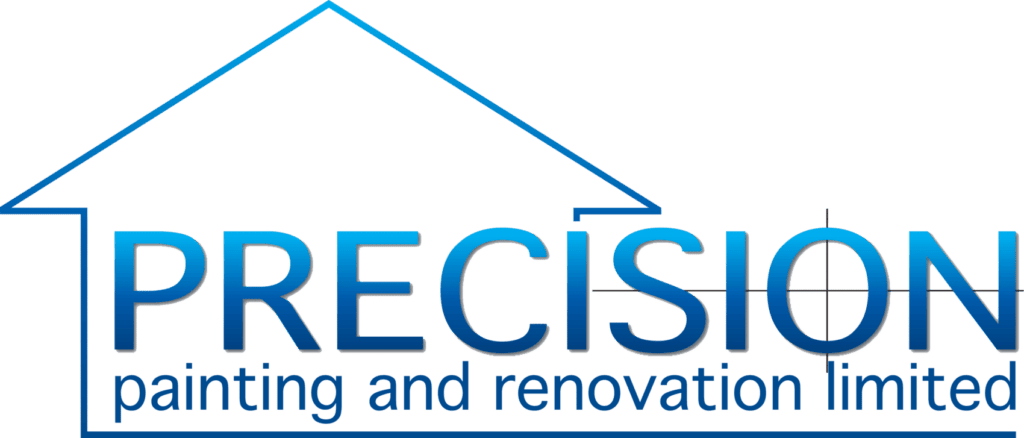When it comes to creating a flawless finish that reflects both precision and craftsmanship, the tools and methods used in painting play a decisive role. Whether it’s a residential makeover or a large-scale commercial project, the quality of the work often depends more on the expertise behind the brush and the technology in hand than on the paint itself. That’s why those who seek perfection often rely on Professional Interior Painting Services—because professionals know that even the smallest detail, from brush bristle type to paint application method, can define the outcome.
Painting may appear straightforward at first glance, but professionals recognize it as a technical skill that blends art and science. The choice of tools, the techniques employed, and the way each step is executed—from surface preparation to final coating—determine not just beauty but also durability, texture, and efficiency. The following sections dive deep into why professional tools and techniques matter so much and how they elevate every aspect of the painting process.
The Precision That Only Proper Tools Deliver
A seasoned painter knows that the finish is only as good as the instruments used. Brushes, rollers, sprayers, tapes, and sanders are not just accessories—they are extensions of the painter’s skill. Each serves a distinct function that affects texture, coverage, and overall finish.
High-quality brushes, for instance, hold paint better, release it smoothly, and ensure cleaner lines along edges and trims. Rollers with the correct nap thickness distribute paint evenly, preventing streaks and roller marks. Paint sprayers, when handled by trained professionals, can cover large areas swiftly while maintaining consistent coating thickness—something nearly impossible with standard tools.
Professional-grade equipment also contributes to efficiency. A roller frame with an ergonomic grip, an adjustable extension pole, or an airless sprayer with precision nozzles minimizes fatigue and allows for longer, more consistent application. This not only ensures a better finish but also enhances productivity, especially on large projects.
Techniques That Turn Skill Into Art
While tools form the foundation, technique is what breathes life into the work. Professional painters don’t simply apply paint—they manipulate it. They understand how surface type, environmental conditions, and even paint composition influence the final appearance.
Consider techniques such as cutting-in, where clean edges are achieved without tape, or feathering, which blends different paint layers seamlessly to avoid visible transition lines. These skills require more than practice—they require precision, timing, and an intimate understanding of paint behavior.
Professional techniques also ensure longevity. For instance:
-
Proper Surface Preparation: Cleaning, sanding, and priming surfaces ensure the paint adheres correctly and lasts longer.
-
Layering and Drying Methods: Professionals allow proper drying time between coats to prevent bubbling or peeling.
-
Controlled Application: Even pressure and directional strokes produce a consistent texture and uniform coverage.
Each of these steps might seem simple, but when executed with technical accuracy, they produce finishes that remain fresh and flawless for years.
The Science Behind Durability
Durability in painting doesn’t happen by chance—it’s engineered through skill and precision. A paint job done with professional tools and techniques resists wear, fading, and peeling far better than a casual DIY attempt.
Proper sanding equipment removes imperfections that could weaken adhesion. The use of professional-grade primers creates a binding layer that enhances paint grip, while controlled paint thickness ensures it doesn’t crack under temperature changes. Advanced spraying systems distribute paint evenly at a molecular level, forming a durable film that can withstand moisture, UV rays, and abrasion.
This scientific precision is why professional painters often guarantee their work. They understand that a properly prepared surface combined with the right tools and techniques forms a lasting foundation—one that doesn’t just look perfect but stays perfect.
Efficiency Without Compromise
One of the often-overlooked benefits of professional painting tools and methods is efficiency. A professional setup minimizes waste, speeds up application, and ensures accuracy even under tight deadlines.
Imagine the difference between painting an entire ceiling with a basic roller versus using an airless sprayer. The sprayer applies even coats in a fraction of the time while maintaining a consistent texture. Similarly, professional-grade masking tools prevent accidental spills, saving time on clean-up.
The process becomes a streamlined operation rather than a time-consuming task. Each movement, each application, and each tool serves a purpose—reducing labor while maximizing output quality.
Common Tools That Define Professional Results
Below is a list of some essential tools that elevate painting results to a professional level:
-
High-Quality Brushes: For trims, corners, and fine detailing.
-
Microfiber Rollers: Provide smooth, lint-free finishes on walls and ceilings.
-
Airless Sprayers: Deliver uniform coverage across large areas efficiently.
-
Sanding Systems: Create a smooth base for optimal paint adhesion.
-
Edge Protectors and Tape Dispensers: Help achieve sharp, clean boundaries.
-
Moisture Meters: Detect hidden dampness that can ruin paint adhesion.
-
Extension Poles: Enable consistent reach without strain or uneven application.
-
Protective Sheets and Drop Cloths: Maintain a clean, professional environment.
Each of these tools supports accuracy, comfort, and quality—transforming the painting process into a controlled, high-precision craft rather than guesswork.
How Advanced Techniques Enhance Aesthetic Quality?
The visual appeal of any painted surface depends largely on subtle factors—light reflection, surface texture, and paint depth. Professionals use techniques designed to control these effects.
For instance, back rolling after spraying distributes paint evenly and enhances adhesion, while crosshatch rolling prevents visible roller patterns. Techniques like sponging, rag rolling, and color washing create layered textures that add visual interest and depth.
Even the choice of brush angle or stroke direction can alter how light interacts with the surface. These refined techniques help transform plain walls into design statements, where texture and color coexist harmoniously.
The Hidden Impact on Cost and Maintenance
At first glance, professional painting may seem like an added expense. Yet, when considering long-term value, the cost is often lower than repeated touch-ups caused by poor application or inferior tools.
A paint job executed with professional-grade tools and techniques reduces maintenance needs dramatically. Properly prepared and applied paint resists moisture, mold, and cracking—saving property owners from early repainting or repairs.
Moreover, efficient use of paint minimizes waste, reducing material costs. Professionals also calculate coverage accurately, preventing over-purchasing or underestimating supplies. This balance of precision and planning delivers financial efficiency alongside visual appeal.
Safety and Environmental Considerations
Professional tools are not only about achieving quality—they’re also designed to ensure safety and environmental responsibility. High-grade sprayers, sanders, and ventilation equipment reduce airborne particles and limit harmful exposure.
Modern painting practices also focus on minimizing VOC (Volatile Organic Compounds) emissions. Professionals use low-VOC or water-based paints along with controlled application methods that reduce spillage and contamination.
Protective equipment such as respirators, gloves, and coveralls further safeguards workers from prolonged exposure. Together, these tools and practices contribute to a healthier work environment and a safer outcome for the occupants.
The Role of Technology in Modern Painting
Painting has evolved far beyond brushes and rollers. The integration of technology has revolutionized how professionals plan, execute, and refine their work.
-
Digital Color Matching Tools: Allow exact replication of shades across surfaces.
-
Thermal Imaging Devices: Detect hidden leaks or insulation issues that could affect paint performance.
-
Laser Levels: Help achieve perfectly straight lines and balanced layouts.
-
Smart Sprayers: Adjust pressure and flow automatically for consistent results.
Technology enhances accuracy and efficiency while reducing the risk of errors. It bridges the gap between craftsmanship and innovation, ensuring each project benefits from precision that only modern tools can provide.
Professional Versus DIY: A Clear Distinction
The difference between a professional finish and a DIY job becomes apparent the moment light hits the wall. Brush marks, uneven coverage, and patchy edges often expose inexperience.
A professional finish, on the other hand, reflects balance, consistency, and skill. Corners are crisp, colors are true, and the surface feels uniform to the touch. These qualities stem directly from the combination of premium tools, refined techniques, and years of practice.
Where DIY enthusiasts might rely on generic rollers or budget brushes, professionals use specialized equipment designed for each surface and paint type. The result isn’t just better—it’s enduring.
Real-World Examples of Professional Excellence
Consider a scenario where a commercial office needs a complete repaint without halting daily operations. Professionals plan meticulously—using quick-drying paints, efficient sprayers, and fast-masking systems to complete sections overnight. The finish is uniform, odor-free, and ready by morning.
Or think of a heritage home requiring restoration. Professionals use gentle sanding systems and soft-bristle brushes to protect delicate surfaces while achieving perfect coverage. Their tools allow precision without damage, maintaining both character and durability.
These examples highlight that professional tools and methods are not just about looks—they’re about performance, timing, and adaptability.
The Long-Term Value of Professional Techniques
The real benefit of professional tools and techniques extends beyond aesthetics. They influence the overall life cycle of the surface. A properly executed paint job can add years to the structure’s appeal and protection.
Walls resist staining and moisture better, exteriors endure harsh climates, and interiors maintain their vibrancy. This endurance translates into reduced renovation frequency and sustained property value.
Ultimately, the right combination of equipment and expertise transforms painting from a routine task into a strategic investment.
Conclusion
Painting, at its highest level, is a discipline defined by precision, technique, and the intelligent use of professional tools. Every stroke, every layer, and every finish owes its success to the synergy between craftsmanship and technology.
The difference between an average and an exceptional paint job often lies not in the paint brand, but in the equipment that applies it and the hands that wield it. The professional approach—built upon proper tools, refined techniques, and meticulous execution—ensures not only beauty but longevity, efficiency, and value.
When artistry meets precision, a wall becomes more than a surface—it becomes a statement.

